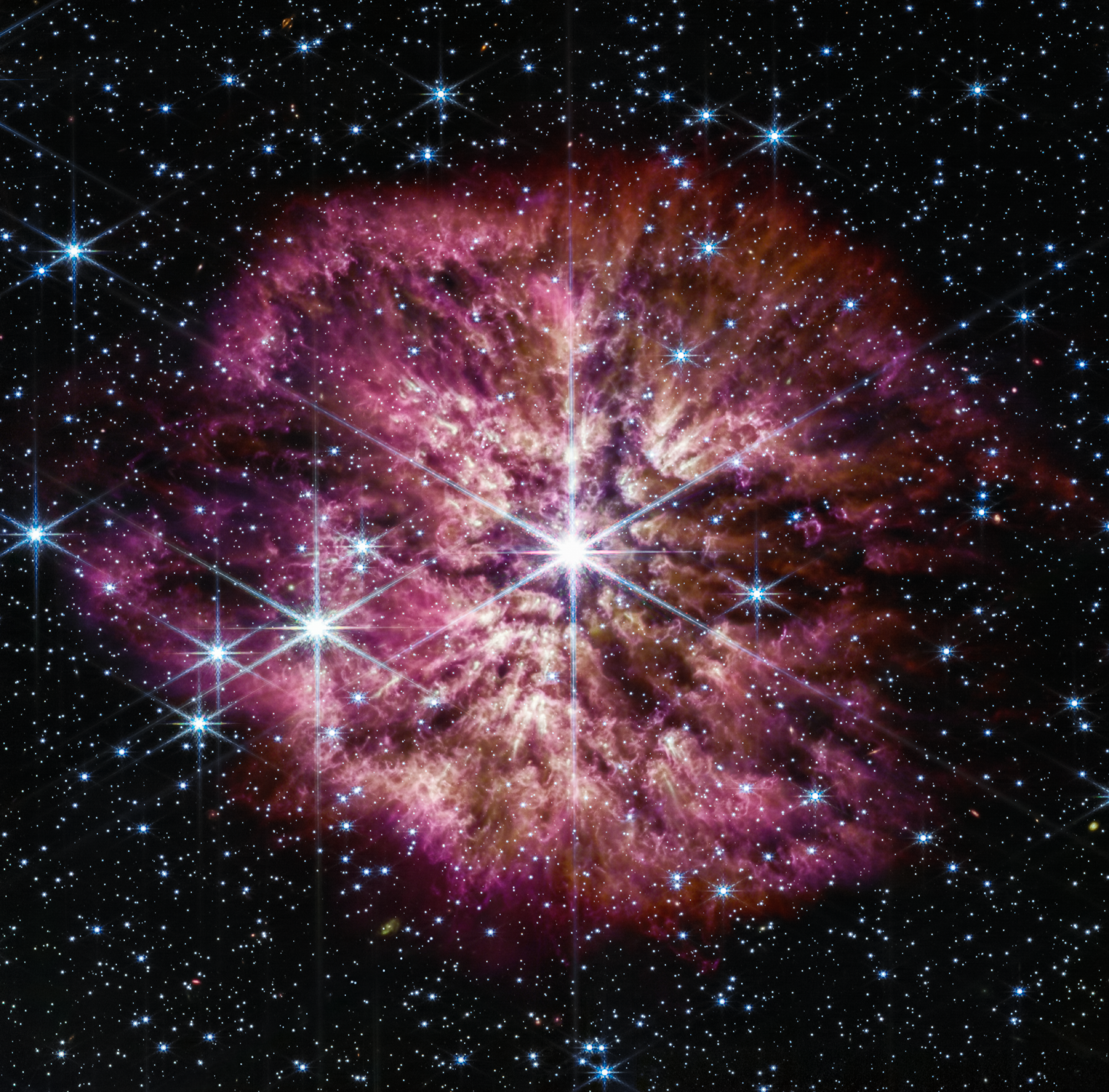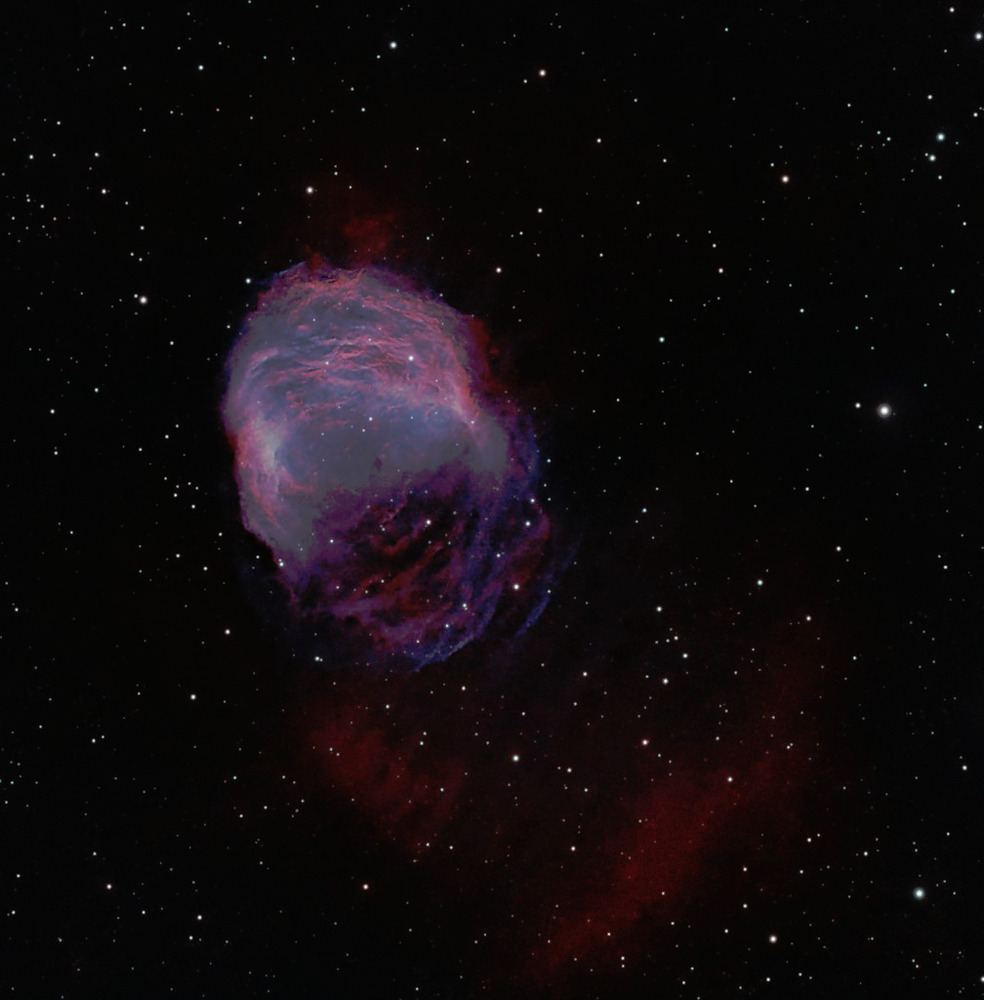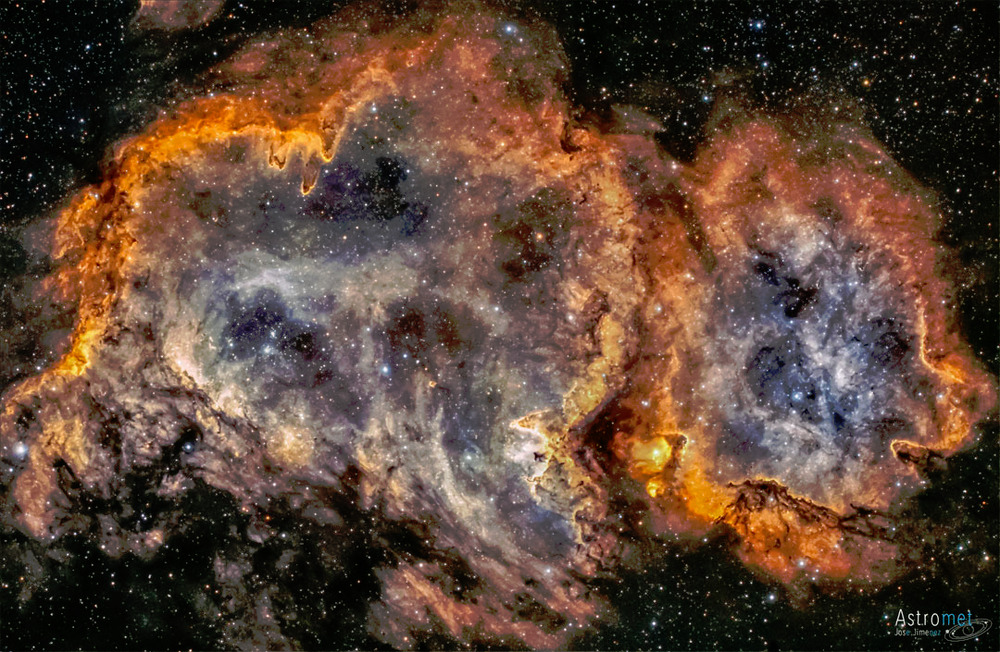OK, apart from looking deep into the cosmos, this is what the Webb telescope images is best at.
Peering closely into nebulosities surrounding peculiar stars
https://apod.nasa.gov/apod/ap230318.html
https://apod.nasa.gov/apod/image/2303/WR124_Webb.png
Explanation: Driven by powerful stellar winds, expanding shrouds of gas and dust frame hot, luminous star Wolf-Rayet 124 in this sharp infrared view. The eye-catching 6-spike star pattern is characteristic of stellar images made with the 18 hexagonal mirrors of the James Webb Space Telescope. About 15,000 light-years distant toward the pointed northern constellation Sagitta, WR 124 has over 30 times the mass of the Sun. Produced in a brief and rarely spotted phase of massive star evolution in the Milky Way, this star’s turbulent nebula is nearly 6 light-years across. It heralds WR 124’s impending stellar death in a supernova explosion. Formed in the expanding nebula, dusty interstellar debris that survives the supernova will influence the formation of future generations of stars.

The original NASA press release for this image is
https://www.nasa.gov/feature/goddard/2023/nasa-s-webb-telescope-captures-rarely-seen-prelude-to-supernova
The rare sight of a Wolf-Rayet star – among the most luminous, most massive, and most briefly detectable stars known – was one of the first observations made by NASA’s James Webb Space Telescope in June 2022. Webb shows the star, WR 124. The star is 15,000 light-years away in the constellation Sagitta.
Massive stars race through their lifecycles, and only some of them go through a brief Wolf-Rayet phase before going supernova, making Webb’s detailed observations of this rare phase valuable to astronomers. Wolf-Rayet stars are in the process of casting off their outer layers, resulting in their characteristic halos of gas and dust. The star WR 124 is 30 times the mass of the Sun and has shed 10 Suns’ worth of material – so far. As the ejected gas moves away from the star and cools, cosmic dust forms and glows in the infrared light.
The origin of cosmic dust that can survive a supernova blast and contribute to the universe’s overall “dust budget” is of great interest to astronomers for multiple reasons. Dust is integral to the workings of the universe: It shelters forming stars, gathers together to help form planets, and serves as a platform for molecules to form and clump together – including the building blocks of life on Earth. Despite the many essential roles that dust plays, there is still more dust in the universe than astronomers’ current dust-formation theories can explain. The universe is operating with a dust budget surplus.
Webb’s Near-Infrared Camera (NIRCam) balances the brightness of WR 124’s stellar core and the knotty details in the fainter surrounding gas. The telescope’s Mid-Infrared Instrument (MIRI) reveals the clumpy structure of the gas and dust nebula of the ejected material now surrounding the star.
Webb’s detailed image of WR 124 preserves forever a brief, turbulent time of transformation.
Note by mollwollfumble. It is essential for good science to get images of these brief turbulent periods in multiple images by the same instruments spaced out over many years.
Bonus APOD images by Amateur telescopes.
Medusa nebula, an old planetary nebula.

The famous Soul nebula, part of “Heart and Soul”

